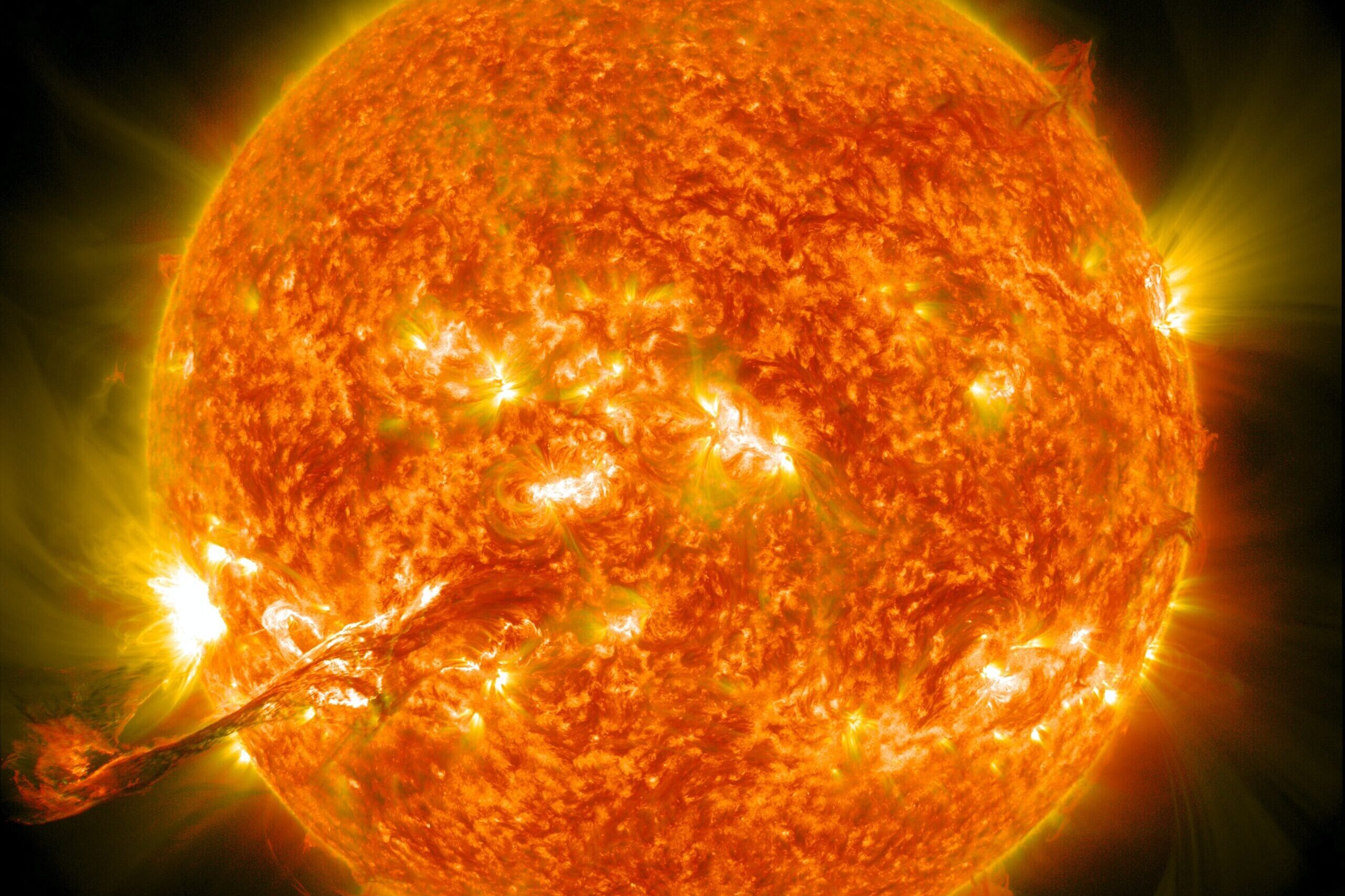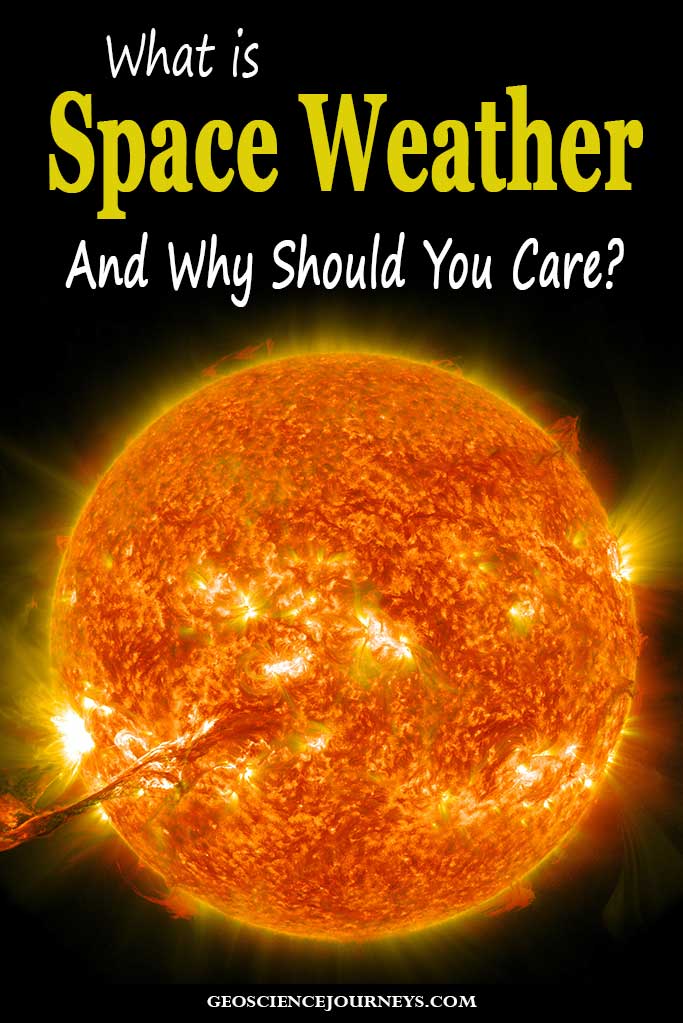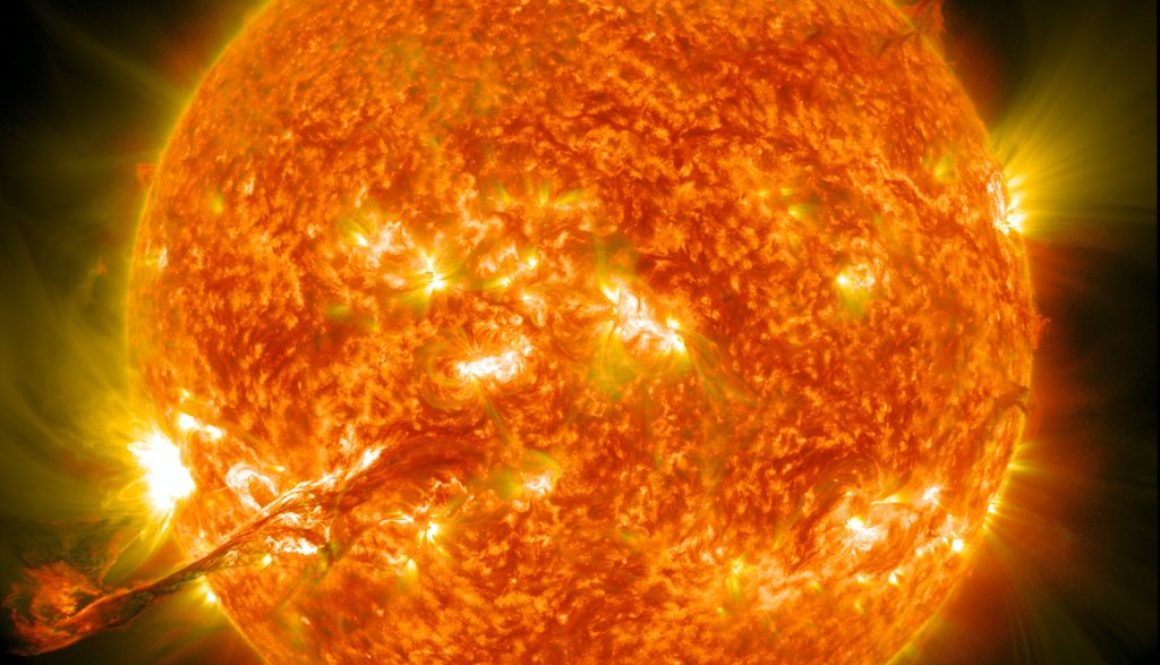What Is Space Weather and Why Should You Care?

Have you checked the weather forecast for today? No, I don’t mean the temperature, humidity, or storm clouds. I mean the OTHER kind of weather – space weather.
Most weather events we encounter on a day-to-day basis occur nearest Earth in the troposphere. Space weather is what occurs around Earth though in the ionosphere, the uppermost part of our atmosphere. The ionosphere is our boundary to space and acts as a shield to incoming threats and disturbances.

Out of This World Weather
Space weather originates from the Sun. At 93 million miles away, the Sun impacts not only our planet but the entire solar system. It is a very hot place and is constantly spewing gas and electrically charged particles into space. This is what is known as the solar wind.
Our planet is protected from most solar wind electrical danger by our magnetosphere. This is an area around a planet that is controlled by the planet’s magnetic field. Most particles that crash into Earth hit our magnetic shield and flow around us. If the charged particles aren’t stopped though, they crash into the ionosphere. This is what causes the beautiful green dancing lights of the aurora borealis.
There’s a Storm Brewing
Some of the magnetic activity of the Sun causes powerful solar flare eruptions called coronal mass ejections. These solar wind events get classified as solar radiation or geomagnetic solar storms and can be dangerous for life on Earth.
Geomagnetic storms are caused by high speed solar wind and coronal mass ejections. Solar radiation storms are associated with solar flares and bathe the Earth with protons and electrons. Solar storms are ranked from G1 events, showing an increase in aurora activity, to G5 events. In 1859, a huge G5 solar storm dubbed the Carrington Event disrupted telegraph services and caused such bright auroras that the storm was visible from as far south as the Bahamas.

The Technology Age
Space weather has existed for a very long time, and ejections from the Sun have largely gone unnoticed for most of human history. However, as our dependence on electronic technology has grown, these events have begun to have more drastic effects.
The radiation from these solar storms can damage the increasing number of satellites and GPS systems orbiting our planet, causing disruptions in communication. Just recently in February of 2022, a geomagnetic storm knocked out 40 newly deployed Starlink satellites.
These storms can also affect or shut down our electrical power grids like one did to Quebec in 1989. The radiation is also extremely dangerous for our exposed astronauts working in space and even people aboard high-altitude flights.
Stormy Weather Ahead
Although solar storms happen very suddenly, scientists make predictions on the strength and when these occurrences are likely to happen. These predictions are available just like normal weather predictions.
Several agencies use instruments to monitor sun data much like normal weather agencies. NASA observes coronal mass ejections through the Solar and Heliospheric Observatory (SOHO). NOAA’s Geostationary Operational Environmental Satellite (GOES) detects changes in solar wind.
The Geospace Dynamics Constellation (GDC) project is a new project. With plans to launch satellites into the ionosphere, scientists will measure new data on temperature and density and help predict specific changes that satellites need to maneuver through.

Sunspots and Solar Activity
Scientists are paying more attention to sunspots recently as they have begun to associate them with Earth-related cycles. Sunspots are darker spots on the Sun’s surface that have cooler temperatures than surroundings. They are also areas of intense magnetic fields that are thousands of times stronger than the Earth’s magnetic field.
Sunspots usually appear in groups, appear randomly, and can last for just a few days to weeks. The number of sunspots has been linked to an 11-year cycle called the “Solar Cycle.” The Sun goes through a period of minimum activity to maximum activity and back to minimum in this time. At each point of maximum activity, the magnetic poles of the Sun flip.
Earth scientists have been studying astronomical cycles in relation to the rock record for many years. The Milankovitch cycles were first proposed a century ago. These cycles proposed that long-term climate patterns are related to the shape of Earth’s orbit, the tilt of the axis, and the direction of the Earth’s axis in relation to the Sun. These cycles of changing solar radiation have been proven in recent years. We are just now really beginning to understand how important the Sun is to our planet, and there is still much more to learn.
Find out what other mysteries of the Earth scientists have yet to solve here.


